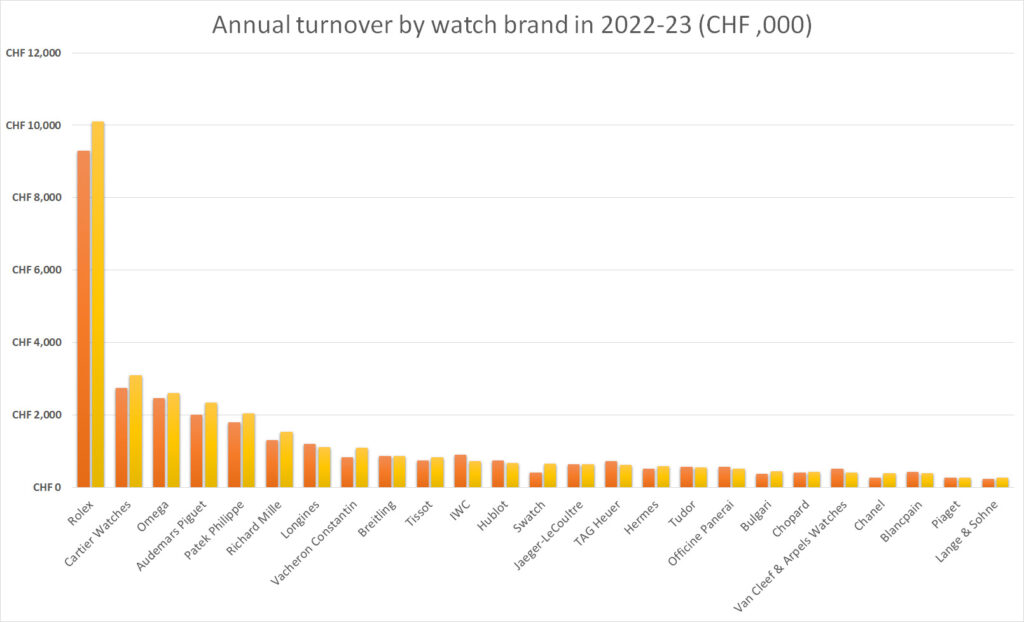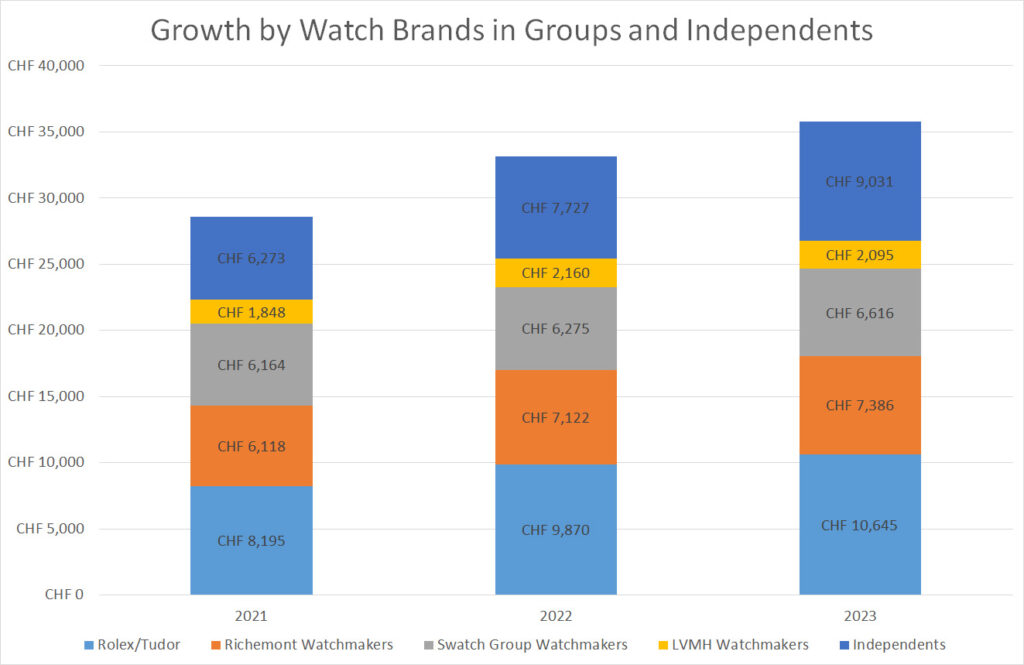This week’s publication of the eagerly-anticipated Morgan Stanley report on the state of the Swiss watch industry will be welcomed by some as evidence of their brilliance while being derided by others as a shonky piece of guesswork that misses the mark.
It very much depends on whether you are a CEO with a brand on the rise or one who would rather not see this type of league table exposing their failures.
Morgan Stanley and its Swiss consulting partner LuxeConsult are clear that the data is imperfect since most of the watchmakers featured in what it calls its Seventh Annual Swiss Watcher are privately owned and coy about their figures.
Even the publicly-traded groups tend not to break down sales by brand, but the authors of the report draw on many different data sets to reach their estimates and it would not be in its seventh year if it were not worth the paper it is printed on.
With these caveats out of the way, let’s get to analysing the key findings of the report, most of which are buried in the detail rather than the headline turnover figures for the 50 biggest Swiss watch brands.
Rolex remains by far the biggest Swiss watchmaker with sales rising by CHF 800 million to CHF 10.1 million in 2023 having made 40,000 more watches than the prior year and selling them at an average of 5% more than in 2022.

Its market share ticked up from 29% to 30%.
2023, particularly the crucial fourth quarter, was described by some as the hardest to forecast in many years. However, Rolex appears to have sailed through those choppy waters with a serene consistency. It was not a remarkable year for the Crown, just another period of relentless success.

Morgan Stanley points out that Rolex’s market share — 30% worldwide and as high as 40% in the United States — is incomparable in any other luxury sector. There is no equivalent colossus in handbags, jewellery, shoes or even motor cars.
The next five brands in the league table: Cartier, Omega, Audemars Piguet, Patek Philippe and Richard Mille, have more typical market shares ranging from 3% up to 8%.
Every brand below Tissot at number 10 on the list has a share of less than 2%.
So, if you exclude Rolex, this looks like a perfectly functioning competitive market.
Does that mean Rolex makes it dysfunctional? Not necessarily. But it is hard to think of a market with a single brand holding more power than Rolex and we can only be grateful that it uses that power, in the main, for good.
Rolex will fight for what it believes is best for itself, for its customers and for its retailers. These fights can get ugly and they can do immediate damage to competitors that do not have the strength to fight back.
For example, it negotiates vast amounts of retail space with its partners at a time when there is so little inventory to fill it. If Breitling, Omega or IWC, which have ample supply, are kicked to the kerb, so be it.
People may not like this sort of strongarm tactic, but I have never heard a Rolex AD complaining about it.
There are persistent rumours that Rolex chokes supply in order to maintain shortages of new watches and the waiting lists that ensue. I don’t believe this is happening. It is simply that demand exceeds supply.
If Rolex spends 5% of its turnover on marketing, which is a fairly typical figure for a hard luxury brand, it would be spending CHF 500 million per year. That is a lot of energy and expense going into increasing demand, and this is what is creating the desire that leads to long waiting lists.
Rolex has faced lawsuits for practices like banning people from marketing customised versions of their watches and from retailers that are prevented from selling their watches online.
None of these practices, in the eyes of the law at least, seem to add up to the sort of abuses that get competition authorities excited. Rolex is not a company that uses its power to crush competitors, it is simply beating them in a reasonably free and open market.
All this said, I would like to see Rolex’s competition do better. Many are. Rolex sales grew by 9% last year, but Cartier was up 13%, AP by 17% and Vacheron Constantin by 33%.
They are coming from a long way back and have a long way to go to topple the Crown, but there are no artificial barriers, despite Rolex’s dominance, to them getting there.
In fact, I believe that Rolex ultimately helps its competitors.
Just as De Beers helped the entire jewellery industry with its “A Diamond is Forever” slogan, so Rolex has convinced the world that they should consider 300-year-old mechanical technology to tell the time, pay more for steel than for gold, and to bear the cost of 300 metre water resistance when most people remove their watches when taking a shower.

